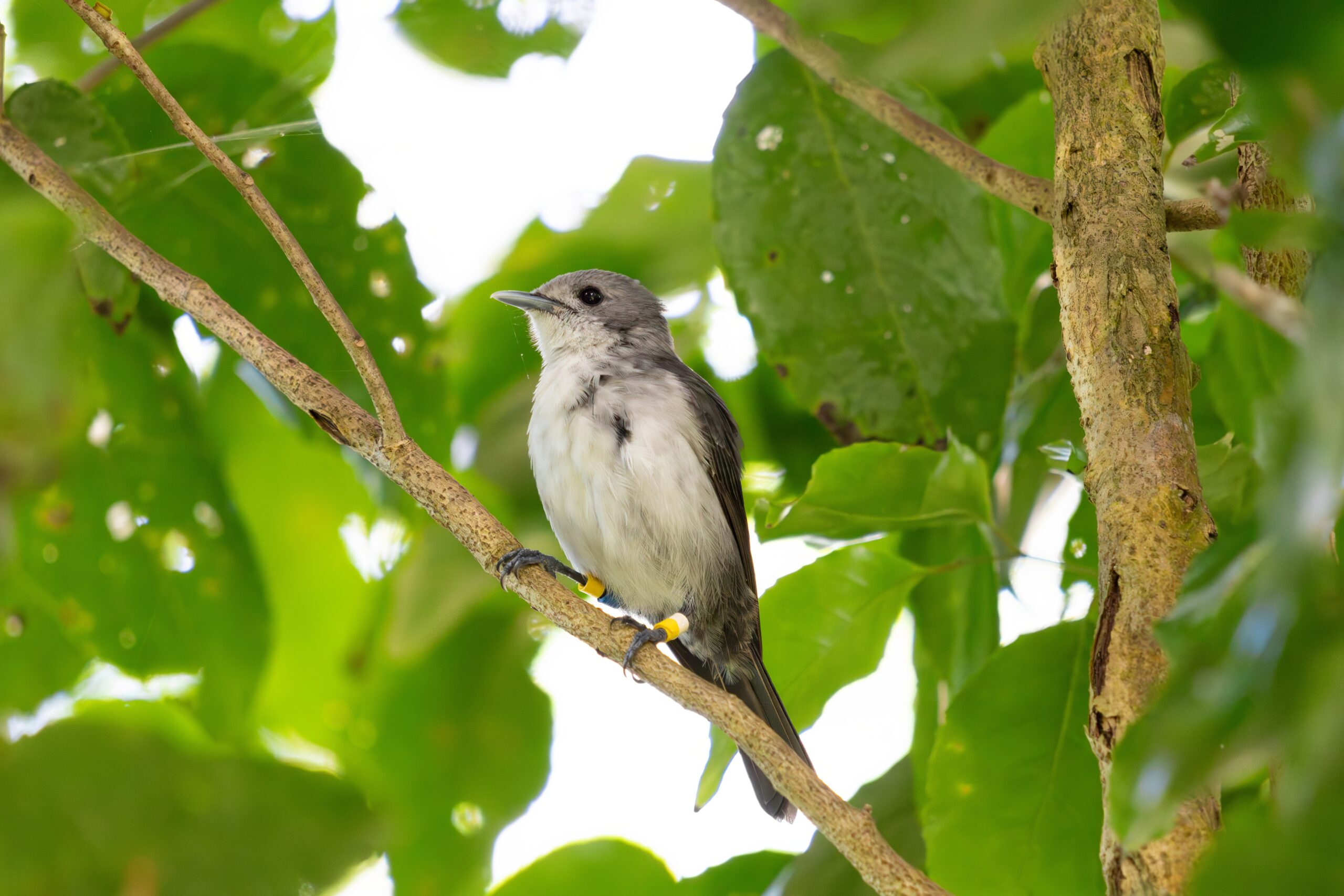Gearing up for Kākerōri Census
Photo Credit - Bryan Shirota, captures grey Kākerōri, already banded.
The Rarotongan Fly-Catcher, locally known as the Kākerōri, has had quite the history. It was once recognised as one of the 10 rarest birds in the world with 29 individuals recorded in 1989. Rats feasting on Kārerōri nests were the number one threat to the Kākerōri.
Having identified that the Kakerōri was nearly wiped out, an annual rat baiting program commenced in what is now known as the Takitumu Conservation Area, starting in 1989. The rat control work achieved by a number of volunteers has played a critical part in keeping the rat numbers down during Kākerōri nesting season. This provided the endemic species with a better chance of not joining a growing global list of birds becoming extinct.
Keeping track and monitoring the health of the Kākerōri population has also involved running an ongoing population census and the banding of individual birds. Banding efforts took place in August and September this year led by Dr Hugh Robertson and his team of volunteers. Hugh, has been involved with monitoring the status of the Kākerōri population for over 30 years, demonstrating his incredible dedication to Rarotonga’s iconic endemic bird. The banding of the Kākerōri is particularly important prior to a census, to better help identify individuals for the total population census count, making for a more accurate and quicker counting process. Sound recordings of the Kākerōri are used to entice the individuals into a very fine mist net that is hard for the birds to see. When caught, the Kākerōri is gently removed from the net, measured and weighed. If it is not already banded, it is also given nice coloured bangles attached around its legs. The last census was conducted in 2022 and recorded a population of around 618 birds in Rarotonga. It was determined that a triennial census (every three years) is sufficient, with the next big census scheduled for 2025.
During the recent exercise 52 new Kākerōri were banded within three weeks. Twenty five of these were young one year olds, 12 were two year olds, 7 were three year olds and 8 were four year olds.
The Kākerōri is unique in that from the age of 0 to three it has orange coloured feathers, then from 4 years old the Kakerori transforms its plumage to grey .
Next year's census hopes to find that the bird numbers have increased from the last Kākerōri population count of 618. It is also hoped the census team can carry out a population count on Atiu, Enuamanu, where a second population of Kākerōri resides since the translocation of the species, starting back in 2001, to further safeguard our treasured forest bird of the Cook Islands.

